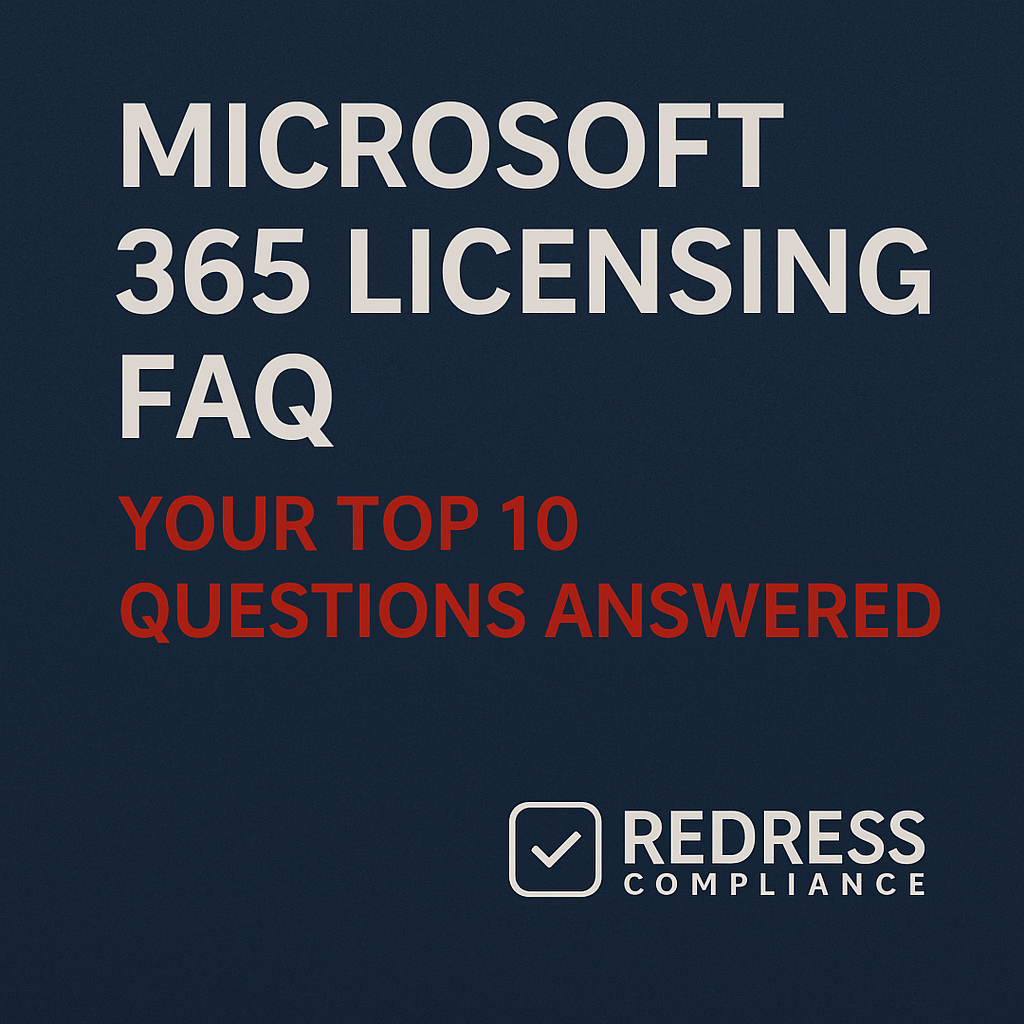Microsoft 365 Licensing FAQ

Introduction – Why a Microsoft 365 Licensing FAQ Matters
Microsoft 365 (formerly Office 365) licensing can seem straightforward, but it often raises recurring questions. IT admins and procurement teams know that licensing choices directly impact cost management and compliance. Yet Microsoft’s bundle options and upsell tactics can create confusion.
This Microsoft 365 licensing FAQ addresses the 10 most common areas of confusion.
We take a buyer-first perspective focusing on cost control, license mixing, and compliance.
From mixing license types and handling downgrades to deciding between add-ons vs. full E5 upgrades, these answers will help you optimize your Office 365/Microsoft 365 strategy.
Read our guide to Office 365 & Microsoft 365 Licensing Optimization.
Top 10 Office 365 & Microsoft 365 Licensing Questions
Q1: Can I mix Microsoft 365 E3 and E5 licenses for different users?
Yes. You can mix license types in one tenant, and it’s even recommended. This practice optimizes costs by right-sizing roles. In other words, M365 license mixing lets you pay for higher tiers only where needed.
Q2: What happens if I assign an E5 license to a user who already has E3?
They’ll end up with both licenses (and you’ll be paying for both). Remove the E3 license if upgrading a user to E5 to avoid double billing for overlapping services.
Q3: Is there a penalty for decreasing license count on a monthly CSP subscription?
No, not for true monthly-term subscriptions under CSP. You can reduce month-to-month licenses without penalty. Annual-term subscriptions (even if billed monthly) lock you in for the year, so you generally cannot reduce those mid-term.
Q4: Do I need to buy Windows licenses if I have Microsoft 365 E3/E5?
No. M365 E3/E5 include rights to upgrade Windows 10/11 to Enterprise edition on devices with an existing base OS license. In other words, if your PCs already have Windows Pro, E3/E5 covers the Enterprise upgrade. (M365 F3 does not include this benefit.)
Q5: Can I temporarily assign a higher license and downgrade later?
On CSP, yes — you can downgrade a Microsoft 365 license at any time. Your data will remain intact, but premium features become read-only once the higher license is removed. In an EA, mid-term upgrades are possible, but reducing licenses usually must wait until the renewal period.
Q6: How do I license part-time or shared accounts?
Each user needs their own license for compliance. Shared mailboxes (up to 50 GB) don’t require licenses. However, creating one generic shared user account for multiple people violates Microsoft’s licensing terms. For occasional-use staff, consider an F3 (Frontline) license to stay compliant at lower cost.
Q7: What is the difference between Microsoft 365 Business Premium and E3?
Microsoft 365 Business Premium (for <300 users) overlaps with many E3 features but has some limits. It’s designed for SMBs, not large enterprises. For organizations over 300 users or those with advanced compliance and security needs, E3 is the better fit.
Q8: Does every user need a license for shared devices (kiosk scenario)?
Yes. Office 365’s shared device licensing model still requires each user who logs in to have their own license. Some special device-based SKUs exist (e.g. for meeting room devices or phones), but you can’t have multiple people sharing one user license concurrently.
Q9: If I have Microsoft 365 E5, do I still need separate Defender or Azure AD Premium licenses?
No. M365 E5 includes all those advanced security and identity tools (the full Defender suite, Azure AD Premium P2, etc.) as part of the package. With E3, you’d have to buy those as add-on licenses if needed, but the full E5 plan already covers them.
Q10: How can I trial E5 features before deciding?
Microsoft offers 30-day trials of Microsoft 365 E5, and sometimes even 90-day evaluations through CSP partners or Microsoft sales reps. It’s wise to pilot new E5 features with a small test group of users before fully committing to an upgrade.
Learn how to avoid these, Common Microsoft 365 Licensing Pitfalls and How to Avoid Them
Conclusion – Using This Microsoft 365 Licensing FAQ
These common Microsoft 365 questions highlight some of the biggest cost and license compliance risks for organizations. Use this FAQ as leverage to push back on unnecessary upsells and to make informed decisions.
The right mix of licenses, add-ons, and governance will ensure your Microsoft 365 spend stays fully optimized. By understanding the rules and options, you can control costs, stay compliant, and get the most value out of your Office 365/M365 investment.
Read more about our Microsoft Advisory Services.
